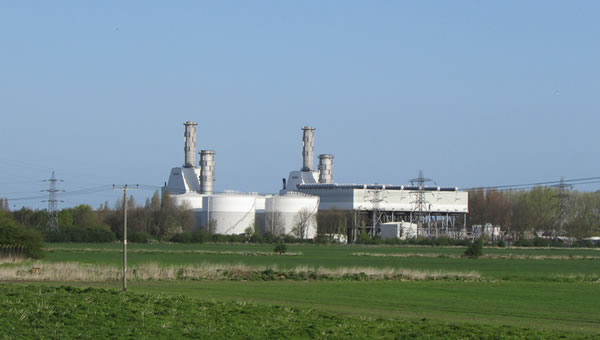Peterborough Power Station is a gas-fired power station built in 1991 with a generating capacity of 405 megawatts. This appeal related to the 2005 rating list assessment for the property; which was originally rateable value £1,350,000 but later reduced to rateable value £1,012,500. The operator of the power station, a subsidiary of British Gas, appealed against that assessment and the appeal was heard by the Valuation Tribunal for England, which reduced the assessment to a nominal figure of rateable value £1 because conditions were such at the relevant date that there was “little or no prospect of making any positive return…..for the foreseeable future”. The Valuation Officer appealed against this determination to the Upper Tribunal (Lands Chamber) which has now issued its decision in the case which is known as Hardman (VO) v British Gas Trading Limited (2015) UKUT 0053 LC.
The Valuation Officer contended that the assessment of the Power Station should be restored to its earlier figure of £1,012,500. He presented five different methods of valuation, looking at: sales values; receipts and expenditure; contractor’s test; settled rating assessments; and the “tone” of the rating list. These methods produced figures ranging between £1 million and £5 million but the Valuation Officer gave most weight to sales values, which supported a figure of £1.4 million, and to settled assessments which supported a figure of just over £1 million.
The ratepayer contended that at the relevant date in 2003 any combined cycle gas turbine power station such as this one would be loss making for several years because of structural factors affecting the electricity market at that time. The ratepayer presented receipts and expenditure calculations that showed a negative “divisible balance” – the profit after allowing for working expenses. The ratepayer considered that, as the basis of valuation for rating assumed a tenancy “from year to year”, and as there was no prospect of any operator making a profit from the power station for the immediate future, the only logical value was a nominal one as determined y the first-tier tribunal.
The Upper Tribunal considered that the issue of law on which this case turned was the question of the proper interpretation of the terms of the hypothetical tenancy which lies at the heart of the assessment of rateable value. The Tribunal’s decision includes a thorough review of cases considering the meaning of a “tenancy from year to year” with a “prospect of continuance”, which is the basis on which properties are valued for rating purposes. The Tribunal determined that the correct approach was to “consider all the facts and circumstances that relate to the hereditament in order to judge what sort of length in terms of a prospect of continuance would be appropriate in that particular case”. This meant that for properties, such as a power station, where considerable investment was involved the hypothetical parties would contemplate a lengthy prospect of continuance.
Having arrived at that conclusion the Tribunal found that given all the facts of this case, including the sale of the power station for a substantial sum at a date shortly before the valuation date, the Valuation Officer’s approach was correct and that his figure of rateable value £1,012,500 should be allowed.
The case shows how, in markets where there is little evidence of open market rents, it is possible for very different valuation conclusions to be drawn from methods such as the receipts and expenditure approach or the contractor’s test. It also reinforces the importance, in those cases, of considering a wide range of methods of valuation and evidence. But it also shows the importance of a “stand back and look” approach to review the valuation conclusions in the light of all the evidence.
Ongoing structural changes in the energy market are likely to mean that this will not be the last time the Tribunal system has to consider the valuation of very large and unusual properties such as this.

